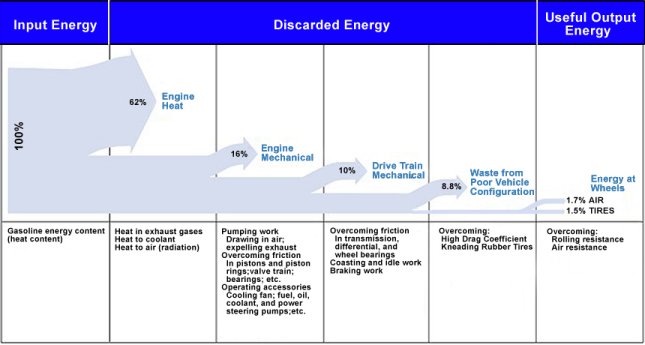|
Efficiency of Electric Cars
Comparing Electricty Generation Methods
A common observation about electric cars is that they just shift pollution
from the car exhaust pipe to the power plant smoke stack.
Here are some facts:
- Electric cars emit 10 times less nitrous oxide (NOx) than gasoline
internal combustion engines.
- Internal combustion engines convert only 12% of caloric energy to
motion.1
- Natural gas cogeneration plants are about 55% efficient in converting
energy to electricity.2
- Fuel cells convert pure hydrogen to electricity at about 50%
efficiency.3 Compressing gaseous hydrogen to a liquid form
requires 33% of the energy of the hydrogen in gas form, further reducing
the efficiency.
- Traditional steam power plants can be up to 50% efficient but are
typically about 35% efficient in converting total caloric energy into
electricity. These traditional steam plants are limited by the Carnot cycle
and the temperature of the steam that can be fed into the turbine.4
- Nuclear power makes electrical power from the heat that is emitted from
radioactive rods. The waste heat (67% of the energy) has to be dissipated in
a nearby man-made lake.
- Wind power now accounts for 2% of the electric capacity in Texas. The
power infrastructure is being updated to allow for this wind power to be fully
used in the next few years.
- Photo voltaics (solar cells) are next in line for commercialization.
Electric power plants may eventually fit in the shingles on your roof, but for now it would take a lot of those
shingles to move present day cars.

References:
1
www.chevron.com
2
www.aga.org
3
www.fuelcells.org
4
www.benwiens.com
|

